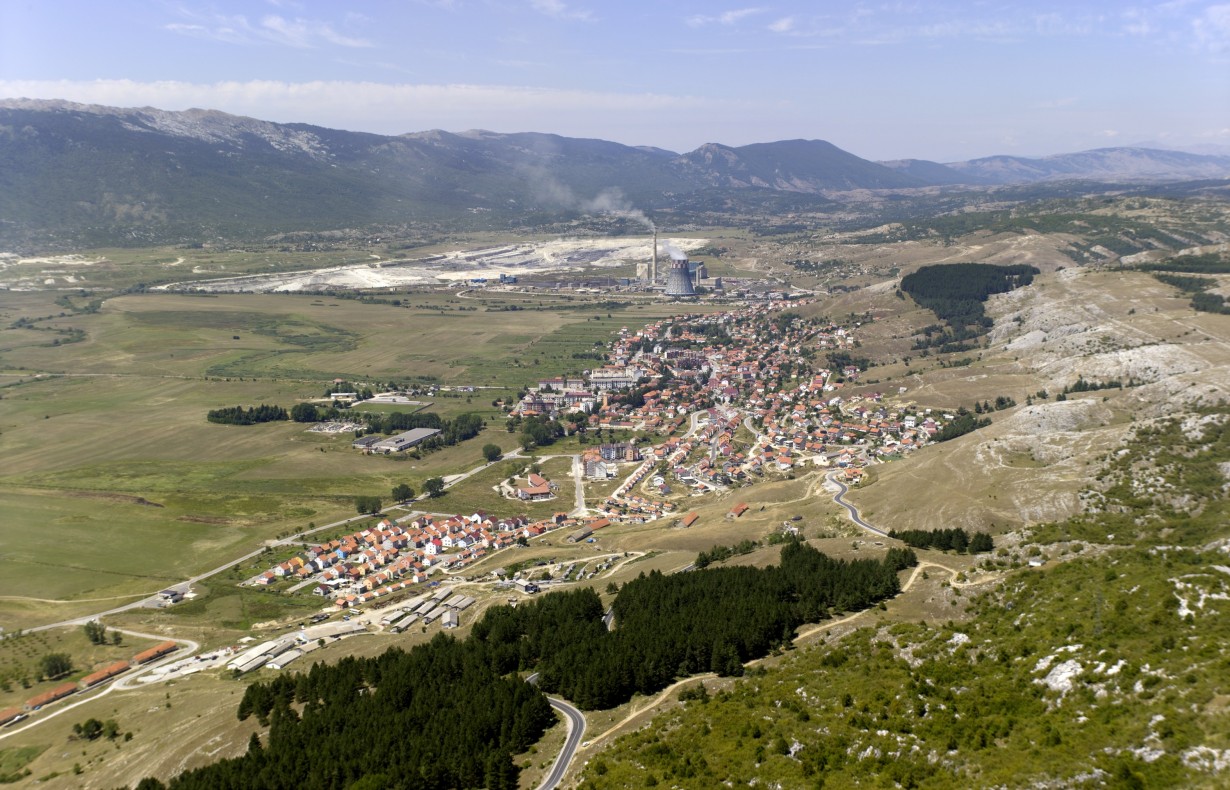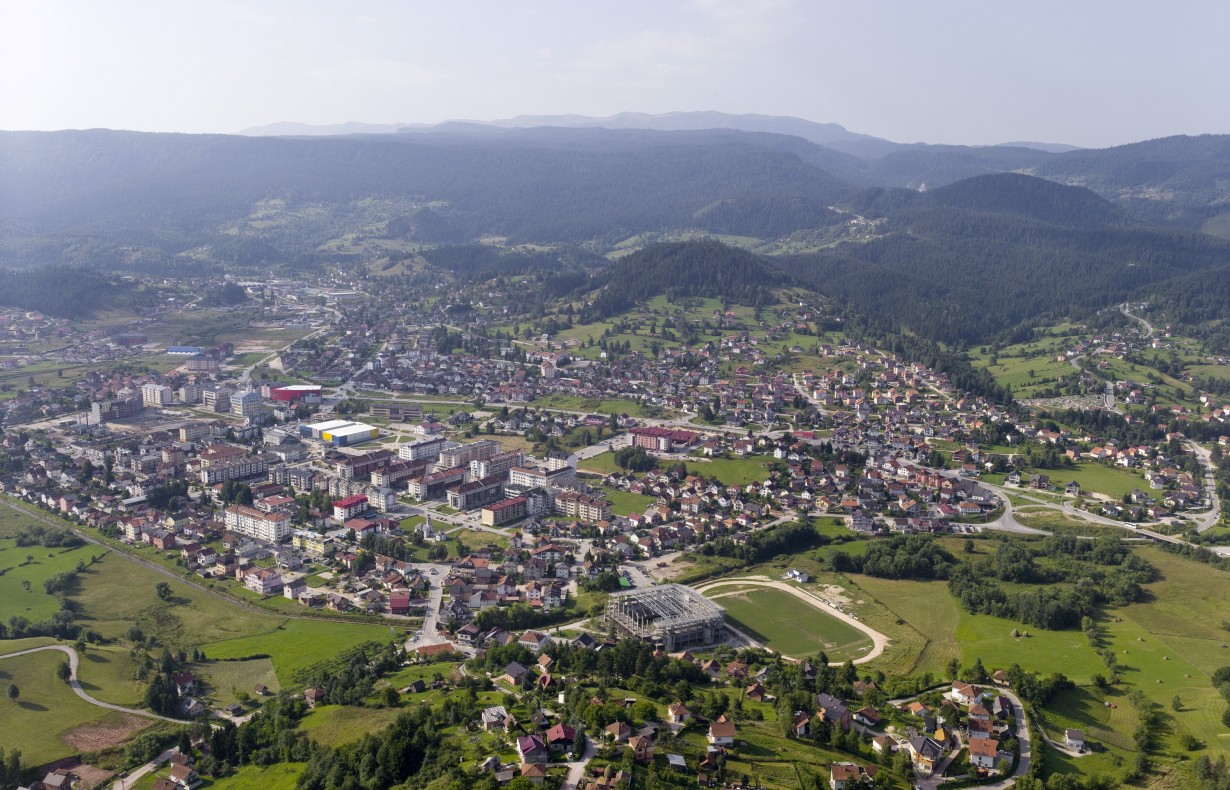Gacko
Gacko is located in the southeast of Republic of Srpska (Bosnia-Herzegovina) and has the area of 736 km² with the population of about 12,000. Together with Trebinje, Ljubinje, Bileća, Berkovići and Nevesinje, Gacko makes the eastern area of Herzegovina, known
Pale
Pale municipality occupy the area of 492 sq km. The seat of the municipality is the town of Pale, located 16 km east of Sarajevo. The municipal territory is of particularly mountainous character, with altitude 500 - 2000 m. According
Vlasenica through history
It is known in all sources that surroundings of Vlasenica was continuously inhabited from prehistoric times until today, which is, along with other things, evidenced by the necropolis with mounds at the site Sosari, numerous other burial sited (71) tombstones
Trebinje through history
It was first mentioned in the 10th century by Constantine Porphyrogenitus, under the name of Tribunia. At the time Trebinje was on the caravan route that led from Kotor and Dubrovnik to Bosnia, Serbia and Montenegro. The town began to
Srbac through history
In the Bronze and Iron Ages, the Pannonians created fortified settlements on hills, called "gradina". The village of Donja Dolina, which was an important trading centre and one of the extremely important archaeological sites, also belongs to that period. A small
Ribnik through history
Ribnik municipality, as well as River Ribnik got their name owing to abundance of fish (Serbian: riba - fish). A small number of written documents on its history speak of life and existence in this area during the Ottoman period. There
Petrovo through history
Petrovo was named after one of the two brothers Petar and Vasilj, who came to this area. Vasilj went into the further into Ozren and Vasiljevci was named after him, and Petar stayed closer to the Spreca River and Petrovo
Mrkonjić Grad through history
The settlement Mrkonjić Grad was created in the current site in 1593, when kizlar-agha Djukanovic (popularly known as Krzlar-agha) built his endowment, who was born in nearby Kotline. He was taken away as "tribute in blood". The town changed its name
Kozarska Dubica through history
Sites and some data suggest that this area was inhabited from time immemorial. After the fall of the Roman Empire, the area between the rivers Una and Vrbas were inhabited by Slavic tribes. From the year 930, this region has witnessed
Kneževo through history
The municipality of Kneževo was also inhabited in ancient times, probably during the Neolithic period. It is clear that this area was inhabited by people of Illyrian origin, which later mixed with the Celts and other immigrants, including Slavic tribes.
City of East Sarajevo through history
Many clues suggest that in the area of today's city of East Sarajevo humans have been present since ancient times. On Glasinac plateau, between the mountains Kopita and Romanija, archaeological finds, including exhibits from more than 2,000 graves in the
Gradiška through history
According to written documents, Gradiška was first mentioned a little more than 700 years ago and it was called Gradiski Brod. However, life on the territory of today's city, in its immediate and wider surroundings, dates back to prehistoric times. In
Šekovići through history
From the Roman period to the present day, Šekovici was a junction of important roads that linked the area east of the Drina with central Bosnia. Šekovići was named after one part of the residents, who settled in this area
Teslić through history
These areas were interesting even to the prehistoric man. A specific evidence of that is remains of weapons and tools excavated in the caves in Rastuša, Blatnica, Vrućica and Čečava. On the steep slopes of Mount Borja and along the
Rudo through history
The Old Rudo, founded in 1555 as an endowment of Mustapha-Pasha Sokolović, who was a nephew of the well-known and far more famous Mehmed Pasha Sokolović, who was also born in this area - the village called Sokolovići. This ktetor
Prnjavor through history
There are no detailed research on settling the Prnjavor area. Most studies were carried out on sites discovered by accident during the excavation work. The archaeological remains on them suggest that the area around the River Ukrina was the oldest settlement
Novi Grad through history
In its long history, Novi Grad was being destroyed and rebuilt for more than 20 times. This town, the first written documents of which appeared in 1280 according to the French historian Charles Diehl, was for many years the meeting
Модрича кроз историју
Током археолосшких истраживања, у долини ријеке Босне, пронађени су трагови паисторијских људи на бројним налазиштима ( Градина и Дуго поље). Према садашњим археолошким подацима, најстарији фармери у општини постојали су у средњем и касном неолитском периоду Много касније (пре 4500 година), темељи првог
Kotor Varoš through history
Archaeologically and historically, Kotor Varoš municipality is very little explored. The history records that settlements existed in this area in the distant past, even in the Neolithic period. The area was inhabited by the Ilyrians at the time. In the fourth
Gacko through history
Gacko is first mentioned in the 12th century in the Chronicle of Priest of Duklja. It changed names since its foundation. One of them is i Metohija - which means church land. Throughout the history, a significant impact on this
Zvornik through history
Archaeological research of prehistoric settlements and necropolises of the area confirmed the continuity of cultural and ethnic backgrounds of the oldest population in this part of the Drina valley, one of which Illyrian ethnos was created. Zvornik is a town with




